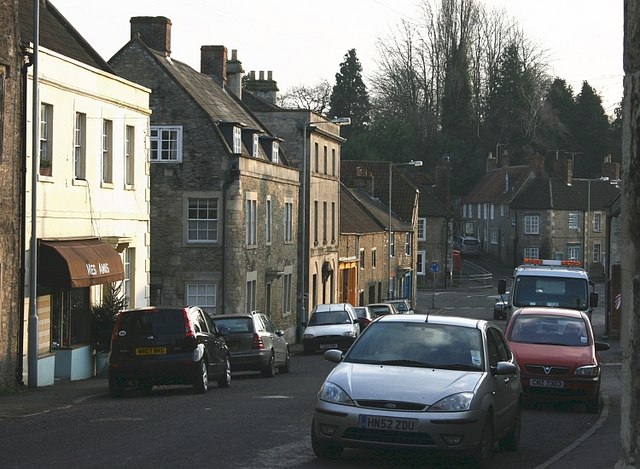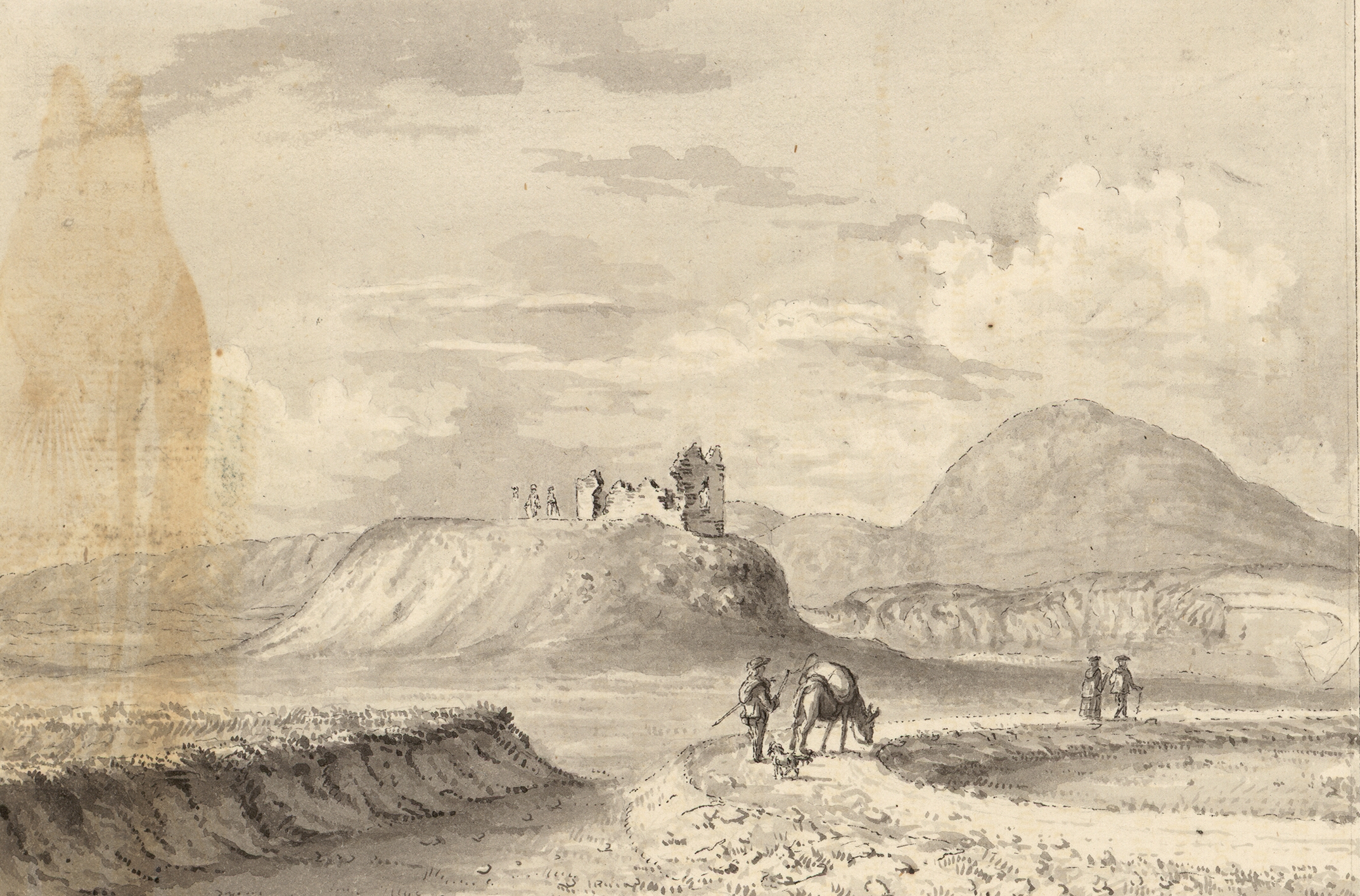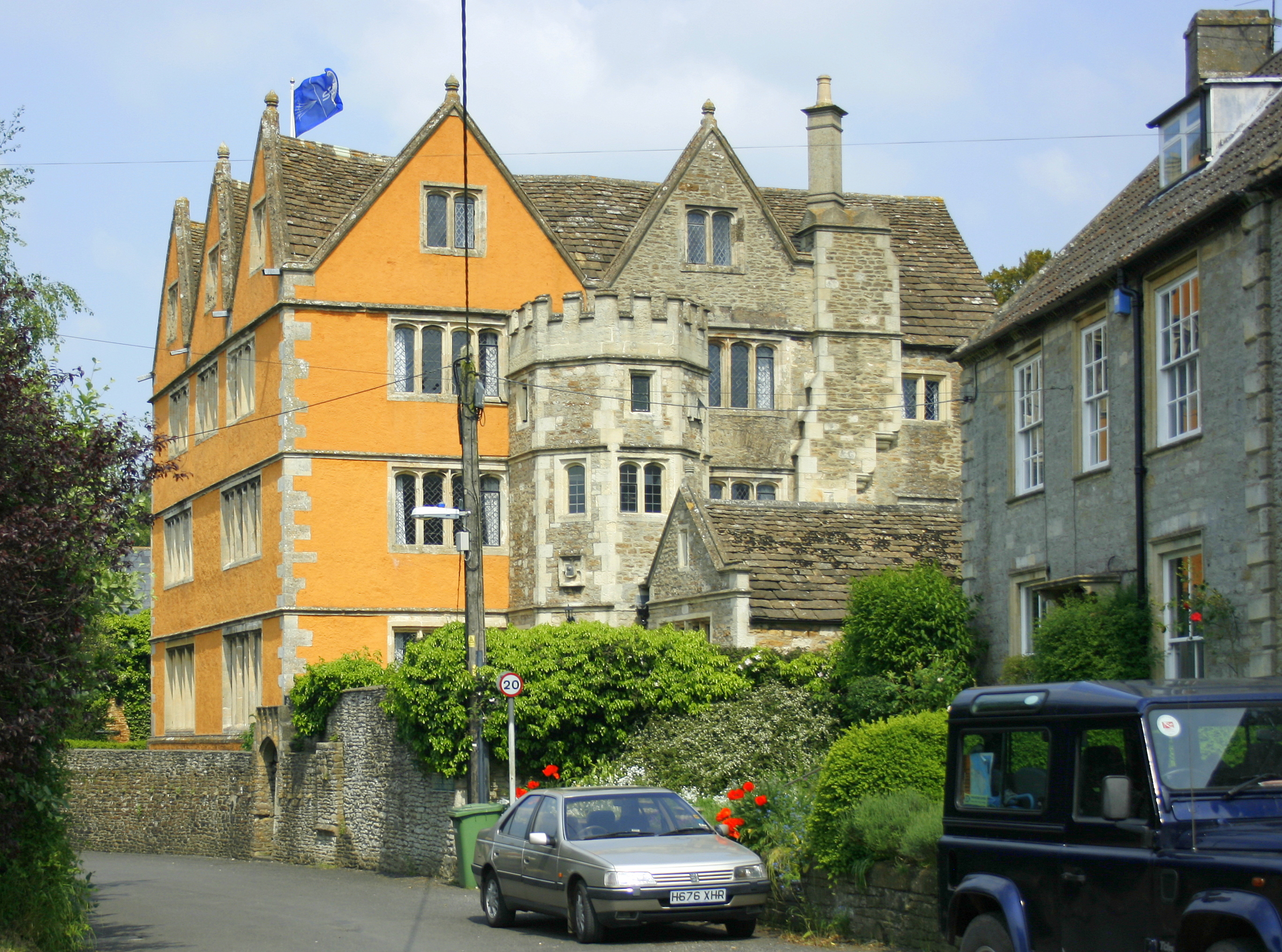|
Church Of St Mary, Orchardleigh
The Church of St Mary is a 13th-century church in the grounds of the Orchardleigh Estate in Somerset, England. History The church stands on an island in the artificial Orchardleigh Lake in the grounds of the Orchardleigh Estate within the parish of Lullington, Somerset. It was built in the 13th century, and was heavily restored by Sir George Gilbert Scott for the Rev. W. A. Duckworth in 1878, whose relations held the estate at that period. It has since been designated a Grade I listed building. The church has retained its sculptures and stained glass from the 14th and 15th centuries respectively. Around 1800, estate owner Thomas Champneys of the Mostyn-Champneys Baronets had a moat dug around the church. Memorials The church has the grave of the poet Henry Newbolt and his wife, a member of the Duckworth family. Present day Weddings are often performed at the church, which has capacity for 120 guests. It is reached from the mainland via a footbridge, and a public footpath ru ... [...More Info...] [...Related Items...] OR: [Wikipedia] [Google] [Baidu] |
Lullington, Somerset
Lullington is a village and civil parish just across the Mells River from Beckington and north east of Frome, in the Mendip district of Somerset, England. The parish includes the hamlet of Laverton, where the Church of St Mary dates from the 11th century. History The name Lullington means ''the settlement of Lulla's people''. Before the Norman Conquest the estate belonged to King Harold, later passing to Longleat Priory and after the Dissolution of the Monasteries was acquired by the Thynne family. It was sold in the early 19th century by the Marquess of Bath and bought by William Duckworth, who rebuilt the village. The parish was part of the hundred of Frome. Just to the south of the village is the Orchardleigh Estate, which comprises a Victorian stately home, built in 1856 by Thomas Henry Wyatt for William Duckworth, a 13th-century island church, and an 18-hole golf course. Governance The parish council has responsibility for local issues, including setting an annu ... [...More Info...] [...Related Items...] OR: [Wikipedia] [Google] [Baidu] |
Beckington
Beckington is a village and civil parish in the Mendip district of Somerset, England, across the River Frome from Lullington about three miles north of Frome. According to the 2011 census the parish, which includes the hamlet of Rudge, which has a population of 983, and the hamlet of Standerwick. History Beckington is mentioned in the Domesday Book of 1086, when it was held by a Roger Bushell, in the place of Æthelfrith, and it was taxed for ten hides, thereby suggesting that the cultivated area was around 1200 acres. The parish was part of the hundred of Frome and, given that a Hundred comprised one hundred hides, the estate would appear to have made up a significant proportion of its hundred. During the medieval period, Beckington was a major centre for the wool trade. By the 15th century, fulling mills had been built along the banks of the River Frome which supported the spinning and weaving cottage industries. The English antiquary John Aubrey (1626–1697) noted in ... [...More Info...] [...Related Items...] OR: [Wikipedia] [Google] [Baidu] |
Grade I Listed Churches In Somerset
Grade most commonly refers to: * Grade (education), a measurement of a student's performance * Grade, the number of the year a student has reached in a given educational stage * Grade (slope), the steepness of a slope Grade or grading may also refer to: Music * Grade (music), a formally assessed level of profiency in a musical instrument * Grade (band), punk rock band * Grades (producer), British electronic dance music producer and DJ Science and technology Biology and medicine * Grading (tumors), a measure of the aggressiveness of a tumor in medicine * The Grading of Recommendations Assessment, Development and Evaluation (GRADE) approach * Evolutionary grade, a paraphyletic group of organisms Geology * Graded bedding, a description of the variation in grain size through a bed in a sedimentary rock * Metamorphic grade, an indicatation of the degree of metamorphism of rocks * Ore grade, a measure that describes the concentration of a valuable natural material in the surroundin ... [...More Info...] [...Related Items...] OR: [Wikipedia] [Google] [Baidu] |
13th-century Church Buildings In England
The 13th century was the century which lasted from January 1, 1201 ( MCCI) through December 31, 1300 ( MCCC) in accordance with the Julian calendar. The Mongol Empire was founded by Genghis Khan, which stretched from Eastern Asia to Eastern Europe. The conquests of Hulagu Khan and other Mongol invasions changed the course of the Muslim world, most notably the Siege of Baghdad (1258), the destruction of the House of Wisdom and the weakening of the Mamluks and Rums which, according to historians, caused the decline of the Islamic Golden Age. Other Muslim powers such as the Mali Empire and Delhi Sultanate conquered large parts of West Africa and the Indian subcontinent, while Buddhism witnessed a decline through the conquest led by Bakhtiyar Khilji. The Southern Song dynasty would begin the century as a prosperous kingdom but would eventually be invaded and annexed into the Yuan dynasty of the Mongols. The Kamakura Shogunate of Japan would be invaded by the Mongols. Goryeo resiste ... [...More Info...] [...Related Items...] OR: [Wikipedia] [Google] [Baidu] |
List Of Ecclesiastical Parishes In The Diocese Of Bath And Wells
The ecclesiastical parishes within the Diocese of Bath and Wells cover the majority of the ceremonial counties of England, English county of Somerset and small areas of Devon, Dorset, Gloucestershire and Wiltshire. The cathedra, episcopal seat of the Bishop of Bath and Wells is in the Wells Cathedral, Cathedral Church of Saint Andrew in the city of Wells, Somerset, Wells in Somerset. The diocesan offices, the bishops' offices and residences and the cathedral are all located around the Bishop's Palace, Wells, Bishop's Palace in Wells. The diocese is not referred to as "Bath diocese" or "Wells diocese", but as "Bath and Wells diocese". The ordinary of the diocese is the diocesan Bishop of Bath and Wells, Peter Hancock; he is assisted throughout the diocese by the Bishop of Taunton, Bishop suffragan of Taunton, Ruth Worsley. Her See was created in 1911. Alternative episcopal oversight (for parishes in the diocese that reject the ministry of women priests) is provided by the provi ... [...More Info...] [...Related Items...] OR: [Wikipedia] [Google] [Baidu] |
List Of Somerset Towers
The Somerset towers, church towers built in the 14th to 16th centuries, have been described as among England's finest contributions to medieval art. The paragraphs and descriptions below describe features of some of these towers. The organization follows Peter Poyntz-Wright's scheme for grouping the towers by what he understands to be roughly the date and group of mason-architects who built them. Poyntz-Wright's scheme came under criticism in the 1980s. Churchill generation These churches have smaller towers with a single window in each face of the top stage; a pierced top parapet without merlons and four square-set corner pinnacles above. Cheddar generation These churches have three windows in each face of the top stage; diagonal buttressing; some with squareset corner pinnacles; some with buttress pinnacles. These range from simple to elaborate designs: (Bleadon, shortly ''before 1390''; Brent Knoll, about ''1397''; Mark, about ''1407''; Weare, about ''1407''; Banwell, abo ... [...More Info...] [...Related Items...] OR: [Wikipedia] [Google] [Baidu] |
Grade I Listed Buildings In Mendip
Mendip is a local government district in the English county of Somerset. The Mendip district covers a largely rural area of ranging from the Mendip Hills through on to the Somerset Levels. It has a population of approximately 11,000. The administrative centre of the district is Shepton Mallet. In the United Kingdom, the term listed building refers to a building or other structure officially designated as being of special architectural, historical or cultural significance; Grade I structures are those considered to be "buildings of exceptional interest". Listing was begun by a provision in the Town and Country Planning Act 1947. Once listed, severe restrictions are imposed on the modifications allowed to a building's structure or its fittings. In England, the authority for listing under the Planning (Listed Buildings and Conservation Areas) Act 1990 rests with Historic England, a non-departmental public body sponsored by the Department for Digital, Culture, Media and Sport; local ... [...More Info...] [...Related Items...] OR: [Wikipedia] [Google] [Baidu] |
Frome
Frome ( ) is a town and civil parish in eastern Somerset, England. The town is built on uneven high ground at the eastern end of the Mendip Hills, and centres on the River Frome. The town, about south of Bath, is the largest in the Mendip district of Somerset and is part of the parliamentary constituency of Somerton and Frome. The population was 28,559 in 2021. Frome was one of the largest towns in Somerset until the Industrial Revolution, and was larger than Bath from AD 950 until 1650. The town first grew due to the wool and cloth industry; it later diversified into metal-working and printing, although these have declined. The town was enlarged during the 20th century but retains a large number of listed buildings, and most of the centre falls within a conservation area. In the 2011 census, the population was given as 26,203. The town has road and rail transport links and acts as an economic centre for the surrounding area. It provides a centre for cultural and sportin ... [...More Info...] [...Related Items...] OR: [Wikipedia] [Google] [Baidu] |
Rodden
Rodden is a village and a former municipality in the district Saalekreis, in Saxony-Anhalt, Germany. Since 31 December 2009, it is part of the town Leuna Leuna is a town in Saxony-Anhalt, eastern Germany, south of Merseburg and Halle, on the river Saale. The town is known for the ''Leunawerke'', at 13 km2 one of the biggest chemical industrial complexes in Germany, where a very wide range of .... Former municipalities in Saxony-Anhalt Leuna {{Saalekreis-geo-stub ... [...More Info...] [...Related Items...] OR: [Wikipedia] [Google] [Baidu] |
Berkley, Somerset
Berkley is a dispersed settlement and civil parish in the Mendip district of Somerset, England. According to the 2011 census the parish had a population of 344. It lies on the north-east edge of the town of Frome, St Mary's church being about from the centre of Frome. The parish includes the hamlets of Oldford, Berkley Marsh and Standerwick, and its eastern boundary is also the county boundary with Wiltshire. Geography and transport The parish church, Berkley House and the primary school are towards the south-east of the parish, and from there the hamlet of Berkley Marsh is about 600m to the west. Oldford hamlet is in the far west of the parish, straddling the boundary with Selwood parish; the River Frome is a little further west. The A361 road from Trowbridge and Beckington used to descend Oldford Hill to reach Frome town centre, but in the late 20th century it was diverted south across the parish to avoid Oldford and bypass Frome to the east. The former route through Oldf ... [...More Info...] [...Related Items...] OR: [Wikipedia] [Google] [Baidu] |
Standerwick
Beckington is a village and civil parish in the Mendip district of Somerset, England, across the River Frome from Lullington about three miles north of Frome. According to the 2011 census the parish, which includes the hamlet of Rudge, which has a population of 983, and the hamlet of Standerwick. History Beckington is mentioned in the Domesday Book of 1086, when it was held by a Roger Bushell, in the place of Æthelfrith, and it was taxed for ten hides, thereby suggesting that the cultivated area was around 1200 acres. The parish was part of the hundred of Frome and, given that a Hundred comprised one hundred hides, the estate would appear to have made up a significant proportion of its hundred. During the medieval period, Beckington was a major centre for the wool trade. By the 15th century, fulling mills had been built along the banks of the River Frome which supported the spinning and weaving cottage industries. The English antiquary John Aubrey (1626–1697) noted in hi ... [...More Info...] [...Related Items...] OR: [Wikipedia] [Google] [Baidu] |
Benefice
A benefice () or living is a reward received in exchange for services rendered and as a retainer for future services. The Roman Empire used the Latin term as a benefit to an individual from the Empire for services rendered. Its use was adopted by the Western Church in the Carolingian, Carolingian Era as a benefit bestowed by the crown or church officials. A benefice specifically from a church is called a precaria (pl. ''precariae)'', such as a stipend, and one from a monarch or nobleman is usually called a fief. A benefice is distinct from an allodial title, allod, in that an allod is property owned outright, not bestowed by a higher authority. Roman Catholic Church Roman imperial origins In ancient Rome a ''benefice'' was a gift of land (precaria) for life as a reward for services rendered, originally, to the state. The word comes from the Latin language, Latin noun ''beneficium'', meaning "benefit". Carolingian Era In the 8th century, using their position as Mayor of the Pa ... [...More Info...] [...Related Items...] OR: [Wikipedia] [Google] [Baidu] |






